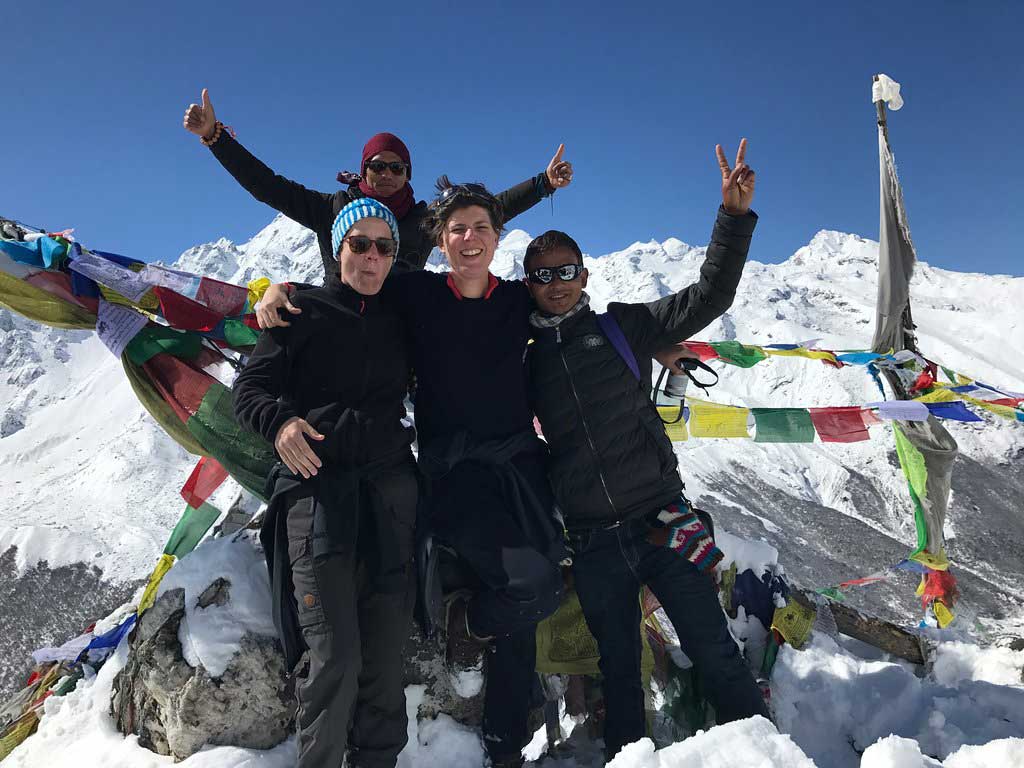Ways to avoid Acute Mountain Sickness during trekking in Nepal !!!

November 30, 2018
Acute Mountain Sickness (AMS), also known as Altitude sickness can be fatal. When you drive, fly or hike up an altitude above 2,400m asl in a short period of time, your body may not have enough time to adapt mountainous atmosphere featuring low levels of oxygen and decreased air pressure. This can end in acute mountain sickness. Symptoms of AMS include dizziness, nausea, headaches, and shortness of breath. The levels of exertion also play a key role. For example, when you push yourself to swiftly hike up a mountain, you are likely to become a victim of AMS.
It is said that ‘prevention is better than cure’, so if you act smart and carry out a little pre-travel preparation before trekking to higher elevations, you can come across an adventure of your lifetime. Acquiring some small pieces of information about Acute Mountain Sickness before departure can mean the difference between a blissful escapade and a trouble-filled experience that could very likely to conclude with an emergency evacuation off amidst a dreamlike journey. Therefore, I am going to share a handful of ways regarding the prevention of Acute Mountain Sickness:
Get appropriate rest:
You should be constantly conscious with regard to the amount of rest you are taking when you are on a quest to traverse elevations over 2,400m asl. At these heights, the significant quantity of rest is necessary in order to loosen up your tired muscles as well as to overcome the sensation of anxiety and suffocation. The thing that you should keep in your mind is not to walk at a rapid pace even if you seem to be in a good condition. Make sure to maintain your pace and take sufficient rest at regular intervals.
Attain higher altitude gradually:
Acclimatization is the best way to lower your chances of getting AMS. Avoid flying or driving directly to higher elevations. Make an ascent each day, stop to rest, and continue the next day. Let your body adapt to the difference in air pressure and oxygen levels as you advance further up above. Progressing steadily assist your lungs to grasp more air through deeper breaths and enables the increased number of Red Blood Cells to transport oxygen to various parts of your body. Limit your climb to more than 3,00m per day and schedule a rest day after each increase in altitude of 1,000m.
Carry a first aid box with sufficient medicines:
Always remember to have a first aid box stocked with required medicine in your possession. The first aid box must include medications for general illness along with antiseptics and bandages. For AMS, the first aid box must be equipped with Acetazolamide or Dexamethasone. Medicines to combat symptoms of AMS should be taken under the prescription of a doctor or medical expert.
Drink abundant water and fluids:
In the course of your journey uphill in the higher elevations, we highly recommend you to drink ample quantities of water as well as other fluids which aid to keep the body hydrated. People around the planet are still unfamiliar with the fact that the human body suffers the loss of water speedily when exposed to high altitude and arid atmosphere. Trekkers must drink at least two liters of water every day. Don’t forget to purify the water before you drink. Moreover, hot drinks and food such as tea, coffee and soup are also helpful to fulfill the demand of water in your body.
In most of the cases regarding altitude sickness, its effects are mild and people often quickly recover. In fewer cases, AMS can turn critical and leads to HAPE (High Altitude Pulmonary Edema) or HACE (High Altitude Cerebral Edema), which can lead to the death of the individual. The most effective treatment against these extreme forms of AMS is DESCEND! DESCEND!! And DESCEND!!!




 +977-9808029724
+977-9808029724